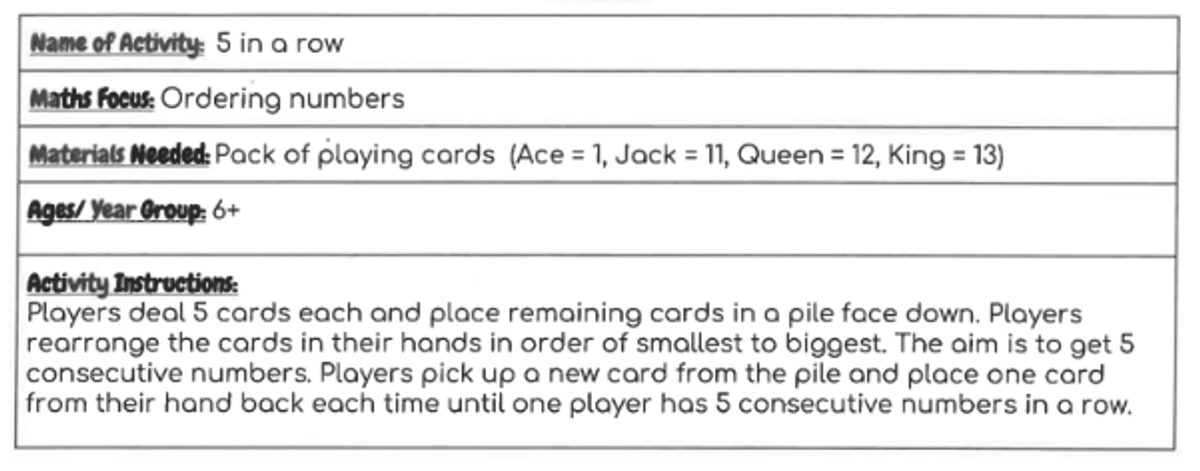Year 1 Unit

It was lovely to catch up with you during our Meet and Greet sessions. It’s always nice to put faces to names and we appreciate the opportunity to get your ‘take’ on your child as a learner. It’s always fascinating to hear where students’ interests lie, as this allows us to build a holistic picture of them.
We noticed during the interviews that there continues to be a lot of energy and positive feedback about last year’s Maths Night. Whilst the homework in Year One remains fairly simple, we are aware that it is literacy based. We would like to encourage students to practise their numeracy skills as well.
Our aim is to include a mathematics based game/activity in each newsletter entry so you are able to practise maths skills at home in a fun and engaging way. The games will centre on skills we are working on in the classroom and may require simple materials such as dice, a deck of cards, objects that can be used as counters, paper/pencils, etc.
Without further ado, here are two games you can play. These help students to develop their number sense.
1.
2.
This game requires students to ‘subitise’. Subitising is a skill where a person can recognise a collection of objects without having to count them one by one. For example, when you roll a dice you are able to determine the number of dots without having to count them. You are subitising! This means that you have a mental picture of that number and don’t need to count it.
The Year One students have been working on their ability to subitise up to 5 objects.
Dot Flash
Play in pairs
Materials: small whiteboard or paper/pencil
How to play: One partner closes their eyes. The other partner draws a collection of dots (no more than 5 to begin with). The dots could be arranged in any way. For example, if you drew 4 dots you may have 2 in one corner and 2 in another corner or you may have 4 dots in a line.
Keeping the board/paper hidden the person drawing asks the other person to open their eyes. Once their eyes are open the player holding the board/paper quickly flashes the dots (approx. 2 seconds) and then hides them again. The first player must say how many dots were on the board. Take turns to draw. Once your child is confident in recognising collections up to 5 you can introduce collections up to 10. The ‘flash’ will need to be a little longer though as the brain takes more time to process larger collections.
Year 1 Teachers
Danielle Dawes, Zoe Sutherland, Juliet Smith, Emma Beaumont

